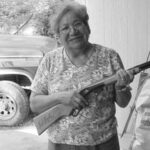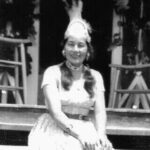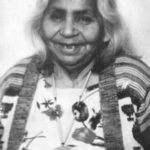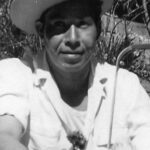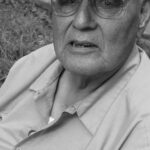COMMENTARY By ELVIA WALKINGSTICK
ONE FEATHER STAFF
It is a well known fact to Cherokee People that it is not only the younger generation that is our most valuable asset but our Tribal elders as well. Elders are living beings with knowledge, experiences and visions of the past who we are blessed to walk with and learn from. They are true gems forever embedded in our history and survival. Our elders guide our lives well into the next generation.
They’re our advisors, our confidantes, and our link to what was and what will be. This link, crucial for our minds, bodies, and spirits, can only be shared with us through their stories of life, tradition, and sacrifice.
Kiowa author M. Scott Momaday summed it up best in his book, House Made of Dawn, saying of his grandmother, “When she told me those old stories, something strange and good and powerful was going on. I was a child, and that old woman was asking me to come directly into the presence of her mind and spirit; she was taking hold of my imagination, giving me to share in the great fortune of her wonder and delight. She was asking me to go with her to the confrontation of something that was sacred and eternal. It was a timeless, timeless thing; nothing of her old age or of my childhood came between us.” (1968, p.84)
This connection to the past and future our elders provide us is far more special than many realize. Lots of times people don’t grasp the power and importance of this connection until an elder takes the journey on to the spirit world and that individual is left with just memories. Often, as well, people forget how to adequately take in oral learning from them. We forget to listen with all of our senses, how to absorb their ornate thought and reasonings, how to let them speak completely before we do. More often than not we take on the learned characteristics not traditional to us but of our colonizers. More than ever, throughout Indian County, elder abuse, in all of its forms, has become an unspoken phenomenon.
When one attempts to go into the topic of elder abuse, it’s something that isn’t easy to talk about, period, so it makes it even harder to address within the community. But, it is most definitely an issue, as hard as it is to face, that needs to be dealt with because The National Center on Elder Abuse estimates that “one to two million Americans 65 years and older have been injured, exploited, or otherwise mistreated by someone on whom they depended for care or protection”.
Frankly, one is too many.
Elder abuse is a broad spectrum as well. It includes the obvious physical, mental, and sexual violations against our elders, but it also encompasses so much more that people have often chosen to sweep under the rug. Not providing necessary hospice and/or medical care and support when needed is abuse. When an elder has food, water, clothing, personal hygiene needs, medicine, and/or shelter refused or just not given to them, it is abuse. When responsible for being present for an elder, failure to show up is abuse. Using coercion and trickery to obtain money from an elder is abuse. Exploiting conservatorship, guardianship, or power of attorney is abuse. Convincing an elder to purchase items they don’t need/want, like a magazine subscription, is abuse. “Visiting” and either taking elder’s money and resources or leaving when they’ve ran out is abuse. Dropping young children off with elders who lack the strength and/or means to provide care is abuse. The taking and selling of elders valuables, including cultural items, is abuse.
We need to stand up for our elders and put a stop to this destructive behavior. Like any other kind of abuse, elders often will not talk about their treatment and those who’ve violated their rights. Caregivers who are perpetrators are often close relatives so there is the fear of either getting them in trouble or being ostracized by the family for speaking up. There is also the traditional way of privacy that keeps many of the abused in the dark and behind closed doors. Respecting an elder’s privacy does not include turning a blind-eye to mistreatment.
Researchers at the University of Alaska Anchorage “found that speaking about a ‘lack of respect’, as opposed to ‘abuse’, opened the floor to much more dialogue amongst the elders themselves.” This leads one to believe that we know better. It is engrained in us, as Native peoples, that respect for our elders is needed, but it is, sadly, missing and we need to get back to observing that.
As stated in the beginning, our elders are the lifeline to our ancestors and we have to make sure to never forget that and turn our backs on them. One shouldn’t ever be capable of any type of abuse if they remembered and truly believed the importance of that elder to the future of our tribe and culture. Our elders let us know who we are and where we have been. This is why we also must remember that our elders include, also, all those who’ve lived, fell, got back up, dusted their selves off and continued on their journey which is life. Everybody has a story, and if they’re willing to tell it so others may learn then we must be willing to listen. It is not our tradition to judge, it is our tradition to support and learn from each and every experience; this is how we’ve survived and thrived and will continue to do so.
In nations all around the world, elders have and still continue to be key players in keeping cultures, traditions and ways of life relevant generation after generation. These men and women who’ve seen life, experienced heartbreak and triumph, and learned from those before them, have and still are the backbone for their people and communities. The transmitters of this knowledge, these experiences, and cultural awareness to communities filled with families, friends, and people who need these lessons to continue on strong for the generations to come. This is why elders should and have been revered, respected and held on high by their respective communities.
We are an enduring people because we are the youth, we are the elders, and we are aniyvwiya. It has become easy to forget to look back because we are so focused on the now, but we need to stay focused on what’s important and that’s being Cherokee and carrying that with us in every step we take.
Our elders have and will continue to walk with us and with them, as Chickasaw author Linda Hogan says, “We are building the future out of the shards of the past; we are now recovering ourselves and reclaiming our traditions.”
We need them as they need us. There is the firm belief that, as Indigenous people, we will walk a path like no other because it is the very path our people before us guided us to. This knowledge and strong history is why we are who we are and that can never be stressed enough.
W. Richard West, Jr., Founding Director of the National Museum of the American Indian says, “The Native Universe does not extend only backward into the past, nor is it one marked by unrelenting suffering. We move backward and forward in time, mindful of our history, but optimistic about our future.”

